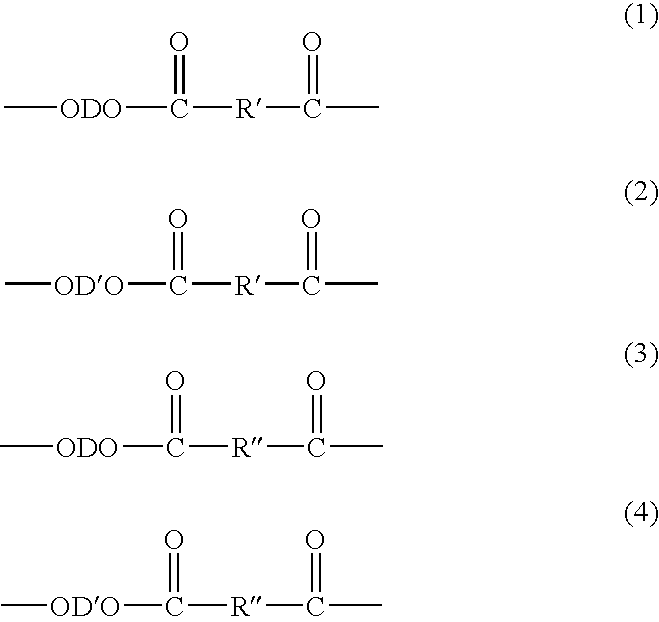Method of Making Polybutylene Terephthalate and Compositions and Articles Comprising the Same
a technology of polybutylene terephthalate and compositions, which is applied in the direction of dyeing process, textiles and paper, etc., can solve the problems of generating significant waste, being disposed of in landfills, and being susceptible to chemical attack by alkali, etc., and conventional pbt-filler molding compositions generally cannot be made from recycle sources of pb
- Summary
- Abstract
- Description
- Claims
- Application Information
AI Technical Summary
Benefits of technology
Problems solved by technology
Method used
Image
Examples
examples
Materials
[0068]Table 1 provides the details of the materials their source.
TABLE 1AbbreviationSourceBDO1,4-ButanediolThe butanediol was obtained fromBASF and had a purity specification ofgreater than 99.5 wt. %.BHBTBis(hydroxybutyl)BHBT was prepared and purified by theterephthalateprocedure given for crude BHBT in theJournal of Applied Polymer Science,Volume 62, pgs 473-480, 1996.TPTTriisopropylTyzor grade from DuponttitaniumPETPolyethyleneGreen colored recycle PET pellets wereterephthalateobtained from St. Jude, a supplier inNorth America.
Procedure / Techniques
[0069]The overall quantity of individual materials and the reaction scale used are shown in Table 2.
TABLE 2Amount of raw materials taken and amount of modified PBT obtained forExamples 1 and 2 and Comparative Example 1.PETBDO forBDO forTotal(gms)FlakesDepolym.Transester.BDOBHBTPBTCEx. 112587.9123210.9—143.23Ex. 112529.36123.1152.46201.82286.46Ex. 212529.3264.5393.85201.82286.46
[0070]The reaction conditions employed for the depol...
PUM
| Property | Measurement | Unit |
|---|---|---|
| Temperature | aaaaa | aaaaa |
| Temperature | aaaaa | aaaaa |
| Temperature | aaaaa | aaaaa |
Abstract
Description
Claims
Application Information
 Login to View More
Login to View More - R&D
- Intellectual Property
- Life Sciences
- Materials
- Tech Scout
- Unparalleled Data Quality
- Higher Quality Content
- 60% Fewer Hallucinations
Browse by: Latest US Patents, China's latest patents, Technical Efficacy Thesaurus, Application Domain, Technology Topic, Popular Technical Reports.
© 2025 PatSnap. All rights reserved.Legal|Privacy policy|Modern Slavery Act Transparency Statement|Sitemap|About US| Contact US: help@patsnap.com



